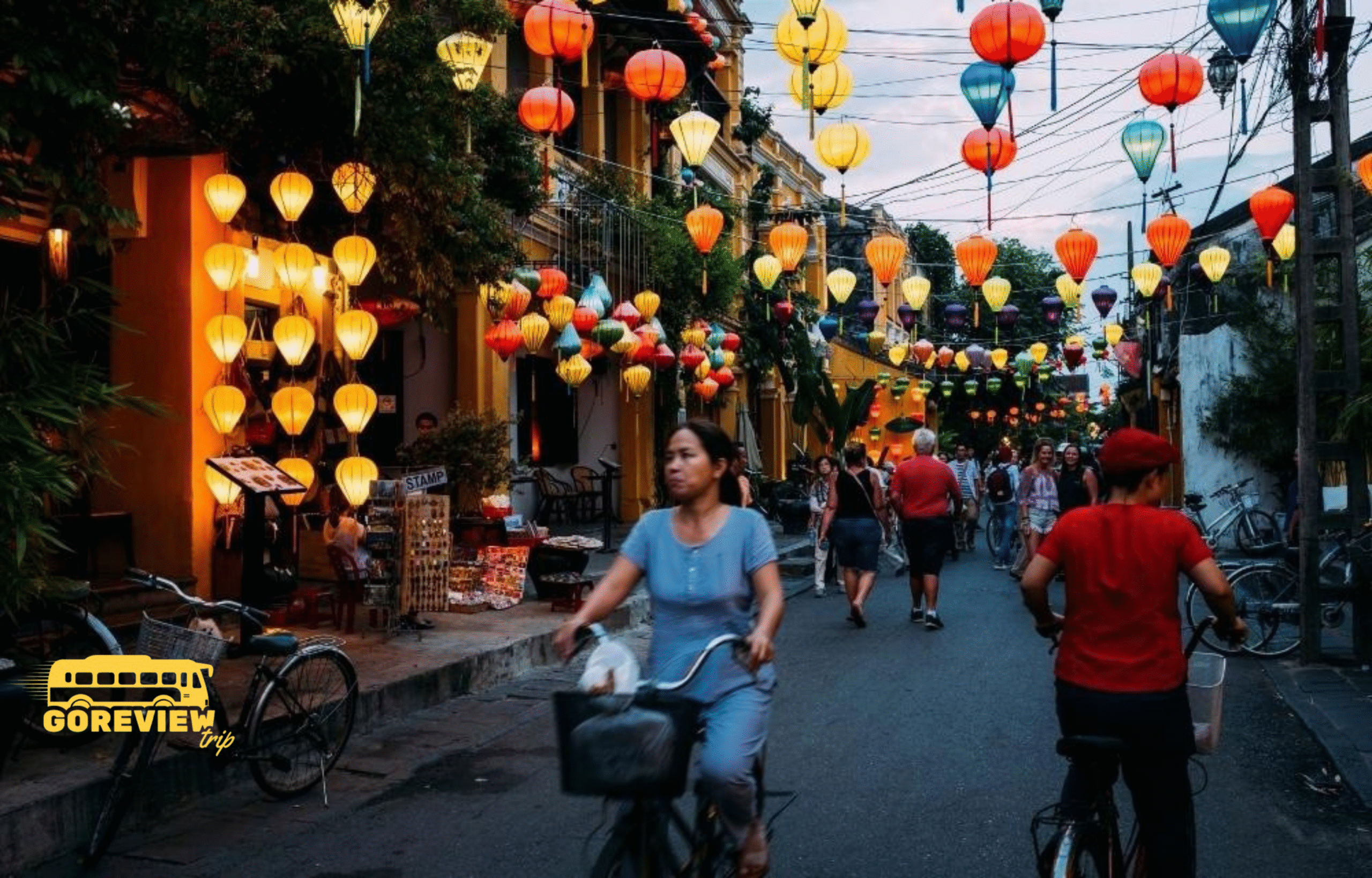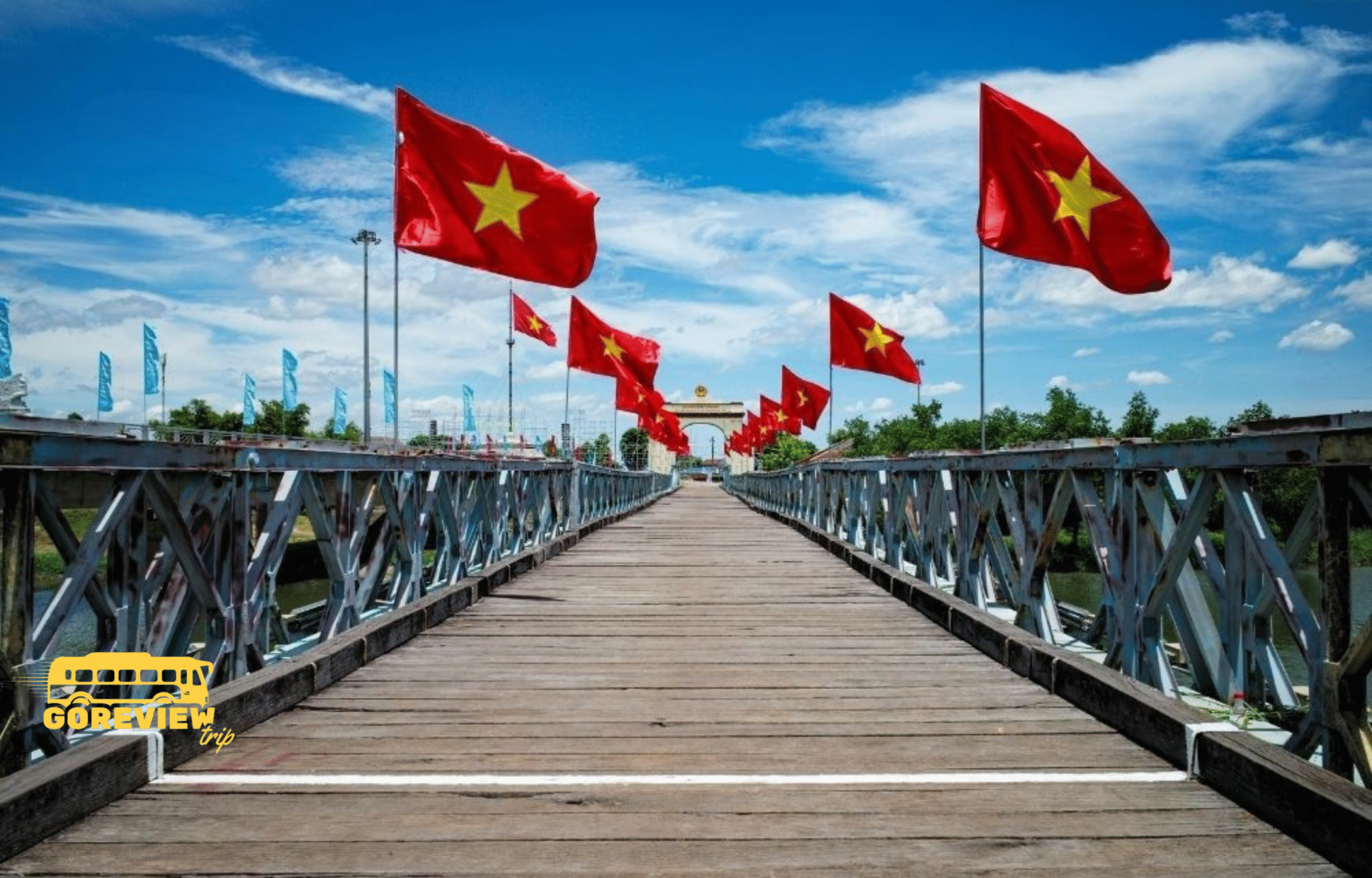Vietnam, a country of breathtaking beauty and profound history, has captivated travelers with its bustling cities, ancient temples, emerald rice paddies, and world-renowned cuisine. As you plan your adventure to this incredible nation, a crucial question often arises: How much does it cost to travel to Vietnam? While Vietnam is celebrated as one of the world’s most affordable travel destinations, the actual cost can vary dramatically depending on your travel style, the duration of your trip, and the destinations you choose to explore. This guide will provide a comprehensive breakdown of all the potential expenses, from flights and visas to accommodation and street food, so you can confidently plan a memorable trip that perfectly fits your budget.
Table of Contents
- 1 Key Factors Influencing Your Vietnam Travel Cost
- 2 Detailed Breakdown of Major Travel Expenses
- 3 Additional & Miscellaneous Expenses
- 4 Sample Budgets for Different Travel Styles (Per Person, Per Day)
- 5 Smart Tips to Save Money on Your Vietnam Trip
- 5.1 Travel During Shoulder or Low Season:
- 5.2 Embrace Local Food:
- 5.3 Utilize Public Transportation:
- 5.4 Bargain Wisely:
- 5.5 Look for Deals & Promotions:
- 5.6 Consider Homestays/Local Guesthouses:
- 5.7 Limit Unnecessary Shopping:
- 5.8 Get a Local SIM Card:
- 5.9 Use ATMs for Cash:
- 5.10 Download Offline Maps:
- 5.11 Drink Tap Water (Boiled) or Bottled Water:
- 6 Conclusion
Key Factors Influencing Your Vietnam Travel Cost
Before diving into a detailed budget, it’s essential to understand that your total spending will be shaped by a few key decisions. The cost to travel in Vietnam is not a fixed number but a flexible figure that you can tailor to your personal style and preferences. Here are the primary factors that will determine your final travel expenses.
Your Travel Style
Your approach to travel is the single biggest determinant of your budget. Vietnam offers excellent value at every level, from a shoestring budget to a luxury getaway.
- Backpacker/Budget Traveler: If you’re all about stretching your dollar as far as possible, you’ll feel right at home. Your daily spending will focus on staying in social hostel dorms, feasting on delicious street food for just a few dollars, and using public transport or walking to get around. Your activities will likely include exploring free attractions like temples and markets.
- Estimated daily spend range: $25–$40 USD.
- Mid-Range Traveler: This is the sweet spot for many travelers, balancing comfort with affordability. You can expect to stay in clean, well-located 3-star hotels or boutique guesthouses. Your meals will be a mix of street food and sit-down local restaurants. For getting around, you’ll rely on a mix of local buses and convenient ride-hailing services like Grab. You’ll also be able to afford some organized tours to iconic sites.
- Estimated daily spend range: $50–$80 USD.
- Luxury Traveler: For those seeking a premium experience, Vietnam delivers incredible value for money. Your budget will afford you stays in elegant 5-star hotels and beachfront resorts. You can indulge in fine dining, private transfers, and personalized tours. This style of travel offers a seamless, high-end experience at a fraction of the cost of similar experiences in Western countries..
- Estimated daily spend range: $150–$300+ USD.
- Backpacker/Budget Traveler: If you’re all about stretching your dollar as far as possible, you’ll feel right at home. Your daily spending will focus on staying in social hostel dorms, feasting on delicious street food for just a few dollars, and using public transport or walking to get around. Your activities will likely include exploring free attractions like temples and markets.
Time of Year (Seasonality)
When you choose to visit Vietnam will directly impact your costs and overall experience.
- Peak Season (November – April): This is the most popular time to visit due to the favorable dry weather conditions across most of the country. Expect to pay higher prices for flights and accommodation, and be prepared for larger crowds at major tourist sites.
- Shoulder Seasons (May – June, September – October): These months offer a good balance. Prices are more moderate, and the crowds are thinner, but the weather can be a bit more unpredictable, with higher temperatures and the possibility of sudden rain showers.
- Low Season (July – August): The wet season brings the lowest prices for everything from flights to hotels. While rain is common, it often comes in short, heavy bursts, and the landscapes are at their most lush and green.
- Public Holidays: Be particularly mindful of major Vietnamese public holidays like Lunar New Year (Tết), and Reunification Day (April 30th) & Labour Day (May 1st). During these periods, domestic travel surges, and prices for transportation and lodging can increase significantly. Many businesses may also close for a few days, so planning ahead is crucial.
Duration of Your Trip

The length of your trip can affect your average daily expenditure. For longer trips, fixed costs like international flights and visa fees are spread over more days, which can result in a lower average daily cost. For example, a two-week trip might have a higher daily average than a one-month trip, even if you are spending the same amount of money on a day-to-day basis.
Destinations You Visit
The places you choose to include in your itinerary will also influence your budget.
- Major Cities (Hanoi, Ho Chi Minh City): While these bustling metropolises have countless budget-friendly options for food and accommodation, they also have a higher baseline cost for transport and upscale services.
- Popular Tourist Hubs (Halong Bay, Hoi An, Phu Quoc): These areas are essential for a classic Vietnam itinerary, but prices for tours, activities, and lodging are often a bit higher due to tourist demand.
- Rural/Off-the-Beaten-Path Areas: When you venture away from the main tourist trail to places like Ha Giang, Mai Chau, or the smaller towns in the Mekong Delta, you’ll find that the cost of everything, from a bowl of phở to a night’s stay, drops significantly.
- Regional Differences: Broadly speaking, prices in Southern Vietnam (Ho Chi Minh City, Phu Quoc) tend to be slightly higher than in the North (Hanoi, Ha Giang), with Central Vietnam (Hoi An, Da Nang) falling somewhere in between.
Detailed Breakdown of Major Travel Expenses
Here’s a detailed look at the core expenses you’ll face on your trip, with estimated costs to help you build a realistic budget.
International Flights
The cost of your flight to Vietnam is often the single biggest expense of your entire trip. This price is highly volatile and depends on several factors: your origin country, the airline you choose, how far in advance you book, and whether you’re traveling during peak or off-peak seasons.
- Estimated Round-Trip Costs:
- From Southeast Asia: You can find tickets as low as $100 – $400 USD, especially if you fly with budget carriers like Vietjet Air or AirAsia and book several months in advance.
- From Europe/North America/Australia: Expect a wider range, from around $600 to $1200+ USD. The price is heavily influenced by the season, with summer and holiday periods commanding the highest fares.
- Tips for Saving: To lock in the best price, book your flights 3 to 6 months in advance. Being flexible with your travel dates and considering flights with layovers can also lead to significant savings. Always use flight comparison websites to scout for the best deals.
- Estimated Round-Trip Costs:
Vietnam Visa Fees
For many nationalities, securing a visa is a necessary pre-trip cost.
- Visa Exemption: Many countries, particularly from Southeast Asia and Europe, have a visa exemption agreement with Vietnam, allowing a stay of 15 to 45 days. It’s crucial to check the official list of visa-free countries and the duration of stay before you book.
- E-Visa: This is the most popular and straightforward option for most travelers. You can apply directly on the official government website.
- Cost: A single-entry E-visa valid for up to 90 days costs around $25 USD in government fees.
- Process: It’s an easy online application process that requires a digital photo and a scan of your passport’s data page. The visa is typically processed within a few business days.
- Visa on Arrival (VOA): This method involves obtaining a pre-approval letter from a third-party agency before your trip and then having your visa stamped upon arrival at a Vietnamese airport.
- Cost: The total cost includes an agency fee for the letter ($10-25 USD) and a stamping fee paid at the airport (~$25 USD).
- Note: Always check the latest visa requirements on official government websites or through the Vietnamese embassy for your country, as policies can change.
Accommodation
Vietnam’s accommodation landscape is incredibly diverse, offering options for every budget and taste.
- Hostels/Budget Guesthouses:
- Cost: A bunk bed in a dorm can be as cheap as $5 – $15 USD per night, while a private room typically ranges from $15 – $30 USD.
- Target Audience: Perfect for backpackers, solo travelers, and those who enjoy a social atmosphere and don’t mind basic amenities.
- Mid-Range Hotels (3-4 Stars):
- Cost: Expect to pay between $30 – $80 USD per night.
- Features: These hotels offer a comfortable stay with essential amenities like air conditioning, Wi-Fi, and often a swimming pool or breakfast included. They are often centrally located, providing great value.
- Luxury Hotels/Resorts (5 Stars+):
- Cost: Prices start from around $100 USD and can go up to $500+ USD per night for exclusive resorts.
- Features: You can expect world-class service, top-tier facilities, and unique experiences at a fraction of the cost of similar luxury properties elsewhere in the world.
- Tips for Saving: Booking online in advance is the best way to secure deals. For a more authentic experience at a great price, consider staying in a homestay or guesthouse.
- Hostels/Budget Guesthouses:
Food & Drink
Vietnamese cuisine is a traveler’s dream—delicious, diverse, and incredibly affordable.
- Street Food & Local Markets:
- Cost: A meal can cost as little as $1 – $5 USD.
- Experience: This is where you’ll find the heart of Vietnamese cuisine. Don’t miss classic dishes like
Phở(beef noodle soup),Bánh Mì(Vietnamese sandwich),Bún chả(grilled pork with noodles), andCơm tấm(broken rice).
- Local Restaurants:
- Cost: A meal here will cost you around $5 – $15 USD.
- Experience: These establishments offer a wider variety of dishes, a more comfortable setting, and are still a great way to enjoy local flavors without breaking the bank.
- Western/High-End Restaurants:
- Cost: A meal at an upscale restaurant can range from $15 – $50+ USD.
- Experience: These restaurants cater to international tastes and often feature sophisticated menus in an elegant setting.
- Drinks: Water, fresh fruit shakes, and local beer like
Bia Hà NộiorBia Sài Gònare very affordable. A famous local coffee,cà phê sữa đá(iced milk coffee), is a must-try for just a dollar or two.
- Street Food & Local Markets:
Local Transportation
Getting around Vietnam is an adventure in itself, with a range of options for every budget and preference.
- Domestic Flights:
- Cost: A one-way ticket can be anywhere from $30 to $100+ USD, depending on the route and airline (e.g., Vietnam Airlines, Vietjet Air, Bamboo Airways).
- Best for: Traveling long distances, such as from Hanoi to Ho Chi Minh City, saving valuable time.
- Trains:
- Cost: A journey along the famous “Reunification Express” can cost $15 – $60+ USD, depending on the distance and class (soft seat, hard sleeper, etc.).
- Pros: It’s a scenic and comfortable way to travel, particularly overnight in a sleeper berth.
- Cons: Slower than flying, but offers a unique, immersive travel experience.
- Buses/Sleeper Buses:
- Cost: The most budget-friendly option for inter-city travel, with prices ranging from $5 – $25 USD.
- Pros: Widespread and frequent.
- Cons: Can be less comfortable and take longer than other options.
- Motorbike Rental:
- Cost: Renting a motorbike costs about $5 – $10 USD per day.
- Pros: Provides ultimate freedom to explore at your own pace.
- Cons: Requires a valid license, and traffic can be chaotic. Not recommended for inexperienced riders.
- Taxis/Ride-Hailing (Grab):
- Cost: Taxis and Grab (the dominant ride-hailing app in Vietnam) are incredibly affordable. A short ride in a city will likely cost just a few dollars.
- Cyclo/Xe Om (Motorbike Taxi):
- Cost: Negotiable, often for short distances.
- Experience: An authentic, if a bit adventurous, local experience. Always agree on the price before getting on.
- Domestic Flights:
Activities & Tours

The cost of activities can be as cheap or as expensive as you like.
- Entrance Fees to Attractions:
- Most temples, pagodas, and museums have a small entrance fee of $1 – $5 USD.
- Major historical sites, like the Imperial City in Hue or Hoi An Ancient Town, typically have entrance fees between $5 – $15 USD.
- Popular Tours:
- Halong Bay Cruise: Prices vary greatly based on the duration and quality of the boat. A one-day tour can start from $50 USD, while a 2-day/1-night cruise can be anywhere from $100 – $200+ USD.
- Mekong Delta Day Trip: These organized day tours are a great value, costing around $20 – $50 USD.
- Sapa Trekking Tours: A 2-3 day trekking tour, which often includes a local guide, accommodation, and food, costs approximately $50 – $150 USD.
- Tips for Saving: Booking tours directly from local agencies instead of a third party can often save you money. Look for group tours, which are cheaper than private tours, and keep an eye out for free walking tours offered in major cities.
- Entrance Fees to Attractions:
Additional & Miscellaneous Expenses
Beyond the core categories, there are several other costs to consider that can add up depending on your habits and preferences.
Shopping & Souvenirs:
Vietnam offers a fantastic array of unique souvenirs, from handcrafted textiles and lacquerware to local coffee and delicious snacks. How much you spend here is highly variable and entirely up to your personal preference and, importantly, your bargaining skills in local markets. You could spend just a few dollars on small trinkets or hundreds on bespoke tailored clothing.
Tipping Etiquette:
Tipping isn’t as deeply ingrained in Vietnamese culture as it is in some Western countries, but it’s always appreciated for good service. It’s not mandatory, but if you’re happy with the service from your guides, drivers, hotel staff, or massage therapists, a small tip (typically $1-5 USD) can go a long way and is a kind gesture.
Travel Insurance:
While it’s an upfront cost, travel insurance is highly recommended and can save you a significant amount of money and stress in unforeseen circumstances. This covers everything from medical emergencies and lost luggage to trip cancellations or unexpected changes.
- Cost: Expect to pay roughly $1 – $5 USD per day, depending on the level of coverage and your age. Don’t skip this; it’s a small investment for major peace of mind.
Emergency Fund:
It’s always wise to set aside a buffer for unexpected situations. This could be anything from an unforeseen illness, a lost passport, or last-minute changes to your travel plans.
- Recommendation: Aim to allocate an additional 10-15% of your total budget as an emergency fund. This ensures you’re prepared for any bumps in the road without derailing your entire trip.
SIM Card & Connectivity:
Staying connected in Vietnam is incredibly easy and affordable. Instead of relying on expensive international roaming, buying a local SIM card is a smart move.
- Cost: A local SIM card with a generous data package typically costs around $5 – $15 USD.
- Pros: It’s significantly cheaper than roaming, essential for using navigation apps like Google Maps, booking Grab rides, and staying in touch with family and friends.
Sample Budgets for Different Travel Styles (Per Person, Per Day)
To give you a clearer picture of [How much does it cost to travel to Vietnam], here are some estimated daily budgets based on different travel styles. These figures are averages and can fluctuate based on your specific choices and the regions you visit.
Budget Traveler/Backpacker:
This style is all about maximizing your experience while minimizing expenses. You’ll prioritize authenticity and local immersion over luxury.
- Estimated Daily Spend: $25 – $40 USD
- Breakdown:
- Accommodation: Staying in hostel dorms ($5-15/night) or very basic guesthouses.
- Food: Almost exclusively enjoying street food and meals from local eateries ($1-5/meal).
- Transportation: Relying on public buses and trains for inter-city travel, and walking or using GrabBike for shorter distances.
- Activities: Focusing on free attractions like temples, markets, and parks, with occasional low-cost tours.
- Example Itinerary Snapshot for a Day: A morning bowl of phở from a street vendor, a bus ride to a local market, exploring a temple, a banh mi for lunch, an afternoon walk around a lake, and a delicious noodle soup for dinner, all while staying in a lively hostel dorm.
Mid-Range Traveler:
This budget offers a comfortable balance between cost and convenience, allowing for more amenities and a broader range of experiences without breaking the bank.
- Estimated Daily Spend: $50 – $100 USD
- Breakdown:
- Accommodation: Staying in comfortable 3-4 star hotels or charming boutique guesthouses ($30-80/night).
- Food: A mix of local restaurants ($5-15/meal) and occasional street food, perhaps a Western meal now and then.
- Transportation: Primarily using Grab (car or bike) for convenience, with occasional domestic flights for longer journeys.
- Activities: Including a few organized tours (e.g., a Halong Bay day trip, a Mekong Delta tour), entrance fees to major sites, and some shopping.
- Example Itinerary Snapshot for a Day: Breakfast at your hotel, a Grab ride to a historical site, lunch at a popular local restaurant, an afternoon cooking class, a relaxing massage, and dinner at a mid-range eatery, followed by a comfortable hotel stay.
Luxury Traveler:
For those seeking indulgence and seamless experiences, Vietnam provides exceptional value in the luxury segment.
- Estimated Daily Spend: $150 – $500+ USD
- Breakdown:
- Accommodation: Staying in 5-star hotels, luxury resorts, or private villas ($100-500+/night).
- Food: Enjoying fine dining restaurants and upscale international cuisine ($15-50+/meal).
- Transportation: Primarily using private transfers, domestic flights, or even private car services for ultimate convenience.
- Activities: Opting for private guided tours, exclusive experiences (e.g., luxury Halong Bay cruises, bespoke tailor visits), and extensive shopping.
- Example Itinerary Snapshot for a Day: Gourmet breakfast at a resort, a private car transfer to a historical landmark with a personal guide, a lavish lunch, an afternoon spa treatment, and an exquisite dinner at a rooftop restaurant with city views, all capped off with a luxurious hotel suite.
Smart Tips to Save Money on Your Vietnam Trip
Vietnam is already an incredibly affordable destination, but with a few smart strategies, you can stretch your budget even further and experience more.
Travel During Shoulder or Low Season:
This is one of the most effective ways to save. By avoiding the peak travel months (November to April) and major public holidays, you’ll find significant savings on international flights and accommodation. While the weather might be a bit more unpredictable during the shoulder (May-June, Sept-Oct) or low (July-Aug) seasons, you’ll benefit from fewer crowds and often more authentic local interactions.
Embrace Local Food:
Vietnamese street food isn’t just cheap; it’s a culinary highlight. Stick to street food stalls and local eateries for delicious, authentic, and incredibly inexpensive meals. A bowl of pho or a banh mi can cost as little as $1-$3, providing a flavorful and budget-friendly experience that often surpasses pricier restaurant meals.
Utilize Public Transportation:
For inter-city travel, buses and trains are far more economical than domestic flights or private cars. Sleeper buses are a popular choice for overnight journeys, saving you on accommodation costs too. Within cities, local buses are incredibly cheap, and ride-hailing apps like Grab (for both motorbikes and cars) offer transparent pricing and are very affordable compared to Western taxis.
Bargain Wisely:
In traditional markets and smaller shops, polite bargaining is expected and can save you a few dollars. Always approach it with a friendly smile and be prepared to walk away if the price isn’t right. However, remember that bargaining is generally not appropriate in fixed-price stores, supermarkets, or established restaurants.
Look for Deals & Promotions:
Before you book anything, follow airlines, hotels, and tour operators on social media or sign up for their newsletters. You might snag flash sales or special promotions that can significantly cut down your costs. Many local tour agencies also offer competitive rates if you book directly.
Consider Homestays/Local Guesthouses:
Beyond just saving money, staying in a homestay or a local guesthouse often provides a more authentic cultural experience than a standard hotel. You might get insights into local life, enjoy home-cooked meals, and connect with your hosts. These options are frequently cheaper than conventional hotels.
Limit Unnecessary Shopping:
It’s easy to get carried away with souvenirs, but if budget is a concern, try to focus on experiences rather than material possessions. Prioritize unique activities and cultural immersion, and choose a few meaningful souvenirs instead of impulse buys.
Get a Local SIM Card:
Upon arrival, purchasing a local SIM card with data is a must. It’s much cheaper than international roaming and essential for navigation, using ride-hailing apps, and staying connected. You can usually find them at the airport or in mobile phone shops in any major city for around $5-$15 USD.
Use ATMs for Cash:
While credit cards are accepted in many larger establishments, cash is king, especially for street food, local markets, and smaller shops. Use ATMs to withdraw local currency (Vietnamese Dong) for better exchange rates than you’d typically get at airport currency exchange booths or hotels. Just be aware of potential ATM fees from your bank.
Download Offline Maps:
Before you head out, download offline maps for the areas you’ll be visiting using apps like Google Maps. This saves on mobile data and ensures you can navigate even without an internet connection.
Drink Tap Water (Boiled) or Bottled Water:
To avoid getting sick, it’s crucial to drink only boiled tap water or bottled water. While bottled water is very affordable, you can also carry a reusable water bottle and refill it at your accommodation if they offer filtered water, or at cafes that provide free refills.
Conclusion
So, How much does it cost to travel to Vietnam? As this guide illustrates, the answer is wonderfully flexible, adapting to virtually every budget, from the most frugal backpacker to the most discerning luxury seeker. Vietnam’s inherent affordability, coupled with its incredible value for money, makes it an accessible dream destination for many.
The key takeaway is that careful planning and choosing a travel style aligned with your financial goals are crucial for effectively managing your expenses. Whether you opt for street food adventures and budget guesthouses or indulge in fine dining and five-star resorts, understanding the cost components empowers you to make informed decisions.
Ultimately, the true value of a trip to Vietnam extends far beyond its monetary cost. It lies in the unique cultural immersion, the unforgettable culinary journey, the breathtaking beauty of its stunning landscapes, and the genuine warmth of its people. Prepare well, embrace the adventure, and you’re sure to have an unforgettable Vietnamese experience that enriches your life without emptying your wallet!





